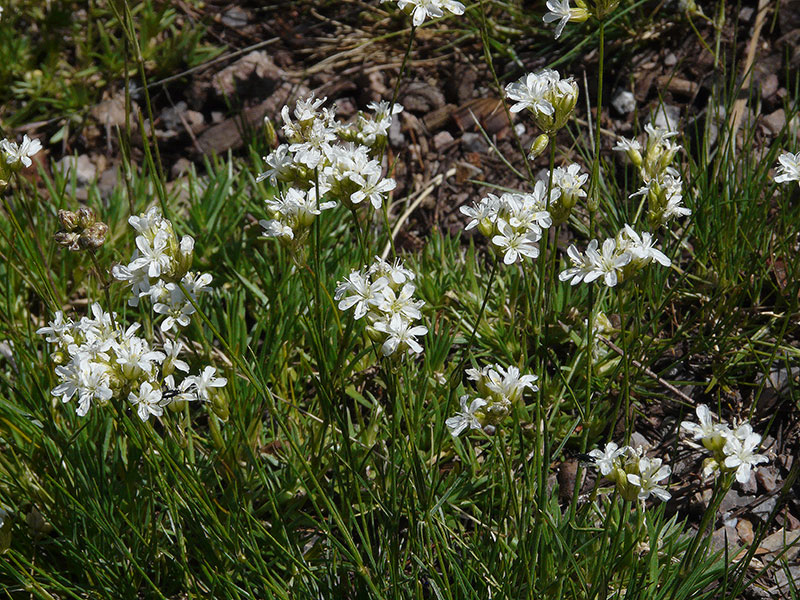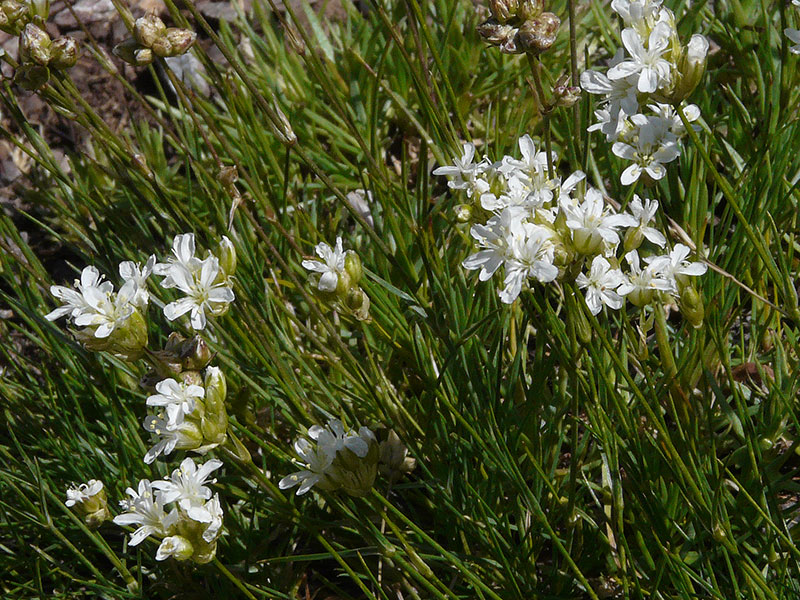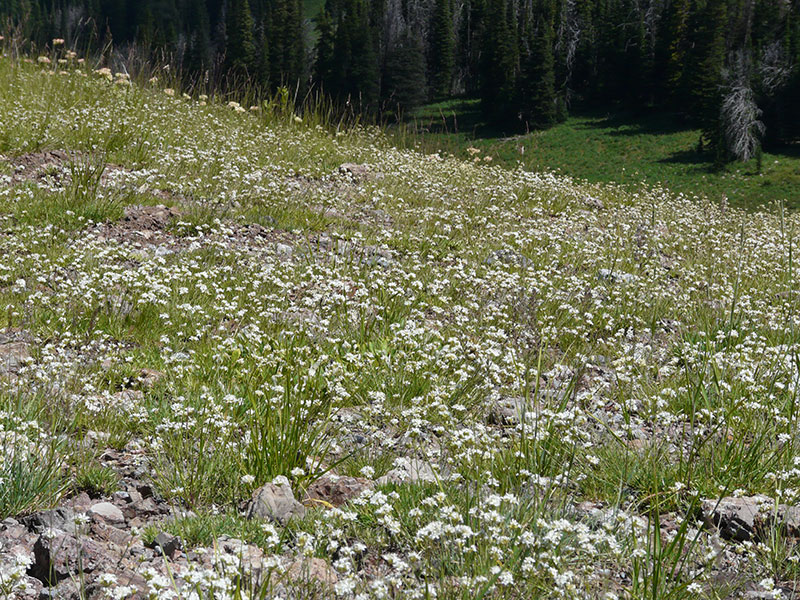Eremogene kingii / King’s sandwort
- low-growing herb with long, thin basal leaf clusters
- white, 5-petaled flowers, ca. 1/2 in across, in terminal clusters
- 10 stamens, sometimes dark, sometimes white
- at higher elevations on shallow soil
Also known as: King’s matted sandwort, Unita sandwort, King’s smooth sandwort
Synonyms: Arenaria kingii, Stellaria kingii
See also: Eremogone capillaris / fescue sandwort; E. congesta / sandwort
King’s sandwort is a fairly common plant growing at higher elevations. It can apparently be either annual or perennial, with a slender taproot. Like many species in that habitat, and like most Caryophyllacean herbs, the plants are low-growing, only around six inches high. The species is generally found on rocky slopes and gravelly ridges and with sagebrush. Or, on dry hills or with pinyon pines and junipers.
The leaves are small, long and thin, growing in tufts at the base and to a lesser extent along the stems. Frequently, the stems are covered with short, glandular trichomes (hairs), but as is so often the case, there is considerable variation in this character. When the trichomes are there, the leaves may look more grey-greenish than green.
King’s sandwort blooms from late spring through summer. The flowers are produced in open, terminal clusters. At the lower elevations of the higher elevation habitat, the flower clusters have more members and there are more clusters than at higher elevations. The flowers are attached to the stems with short stalks (pedicels).
The individual flowers have five petals. These are white and short, around a 1/4-inch long. The flower centers are yellowish, and each flower has ten white or purple/brown tipped stamens. When the stamens aren’t white (as the ones in the gallery are), the flowers look like they are covered with colored spots.
At this point, I should note, from the Floras of North America website, that “As this genus is in many ways a “problematic group,” some effort beyond what may be considered “normal” may be needed for accurate identification.” I have two other Eremogone spp. on the site and won’t even try to guarantee that kingii is different from capillaris.
| Color | |
|---|---|
| Family | |
| Blossom size | |
| Inflorescence size | |
| Inflorescence type | |
| When? | |
| Where? | exposed, forest gaps, higher altitudes, rocky areas, with sagebrush |


